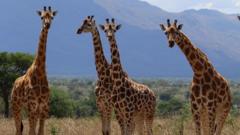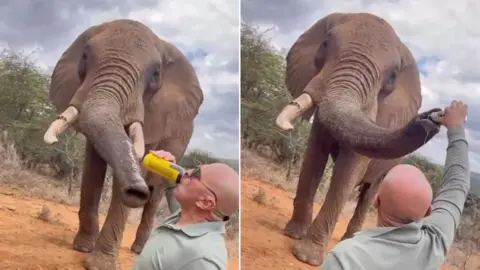In a breakthrough report by the International Union for Conservation of Nature (IUCN), scientists have confirmed that there are four distinct species of giraffes, altering the long-held belief that these majestic mammals were a single species. This revelation is pivotal for conservation strategies aimed at protecting these iconic creatures.
To arrive at this conclusion, researchers compared genetic information alongside the physical characteristics of giraffes, focusing specifically on skull size and head shape. They identified significant genetic diversity that warranted classification into four species, further suggesting that geographic barriers such as deserts, rivers, and valleys have historically led to the separate evolution of these animals.
The first of the newly recognized species is the Southern giraffe, which inhabits regions in South Africa, Angola, southern Botswana, Namibia, southern Zimbabwe, Zambia, and southwestern Mozambique. Landmark features like the Kunene and Zambezi rivers and the rainforests in the Congo Basin have acted as natural boundaries for this species.
Next, scientists identified the Reticulated giraffe, native to the savannas and wooded grasslands of Kenya, Somalia, and Ethiopia. The Tana River and various geological formations in Ethiopia have isolated this species from its northern counterparts, influencing its evolutionary pathway.
The Northern giraffe is another new classification, predominantly found in western Ethiopia, central and western Kenya, eastern South Sudan, and Uganda. This species is separated from others by the Nile River and Lake Victoria, as well as its migratory patterns.
Finally, the Masai giraffe, recognized for its leaf-like patterned coat, inhabits Kenya, Tanzania, and Uganda. While it appears to have distinct markings, researchers noted that these patterns vary across individuals and populations, complicating the visual identification of separate species.
The IUCN emphasizes that understanding genetic differences among these giraffes is crucial for their conservation. “The more precisely we understand giraffe taxonomy, the better equipped we are to assess their status and implement effective conservation strategies,” noted co-author Michael Brown.
The single classification of giraffes had categorized them as vulnerable to extinction. However, the discovery of these four species may lead to a more targeted approach in assessing their conservation status, allowing for improved protective measures for these remarkable animals.




















